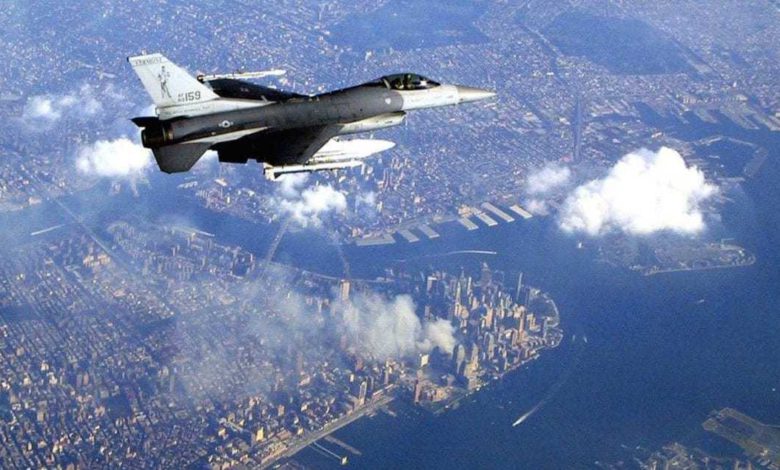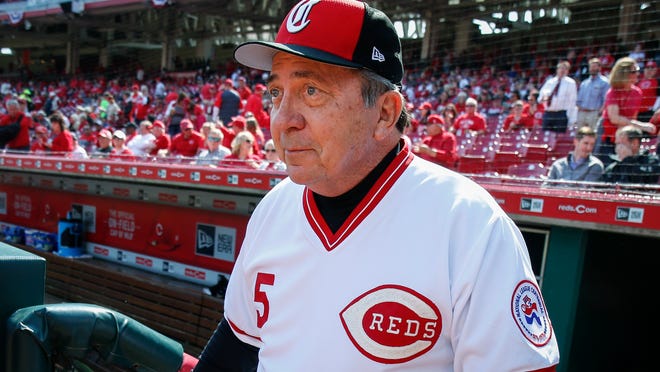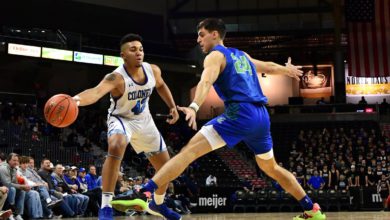
In the minutes following an attack on the World Trade Center on Sept. 11, 2001, concern spread quickly between members of the Vermont Air National Guard. For Col. Dan Finnegan, like countless other Americans, the morning began with work duties before his attention shifted to a breaking news broadcast on a nearby television set. "Col. Jensen walked through, 'Hey, you may want to see this — an airplane has hit the World Trade Center,'" he recalled. "We turned that television on," Finnegan said, pointing to a set inside of the base. "That was the first time we saw the gravity of the situation that was developing."Within hours, the Guard's F-16s were armed with live missiles and en route to Manhattan, roughly 260 miles south of their base. Finnegan said the operation was quick to be deployed, but came with clear instructions. "It was 'get airborne, make sure there is fighter aircraft overhead,'" he said. "Non-stop."The Guard trains for quick responses, but pilots said it was difficult to process the full magnitude of what was happening that morning as they prepared for their first armed flight over American land. "In a case like this, you may be asked to shoot down a civilian airliner," Finnegan said, pausing. "And I think that thought had not crossed any of our minds at the time."Now-retired Lt. Col. Terry Moultroup was one of the first guard members to get off the runway and above Manhattan. What he saw below — a hazy plume of smoke rising from Ground Zero behind a fighter jet armed with air-to-air missiles — would be captured forever with the help of a digital camera stowed away in his cockpit. With a vast majority of flights grounded after the attacks, it offered a rare view of the devastation from above and, for some, a message of reassurance. It quickly became one of the most downloaded images on military websites and made the front page of newspapers around the world. "I didn't think it would go worldwide," Moultroup remembered. The pilots' presence following the attacks marked the first of 122 consecutive days they would spend guarding airspace above the nation's largest city. Many had flown over many times before, but never like this. "That evening, I remembered the utter dead silence in the air," Finnegan said. "There wasn't an aircraft around and we were there to make sure. Under the night vision goggles, you could see all the flashing lights, and then in the infrared, you could see how hot the wreckage was and the first responders that were down on the ground." He continued, "And they would remain there as we continued to fly these missions. Twenty-four hours. Seven days a week."Some members of the Green Mountain Boys remember having tangled emotions about the assignment in the weeks that followed as crews below continued to look for the more than 2,600 people killed in the attacks. "You are kinda back and forth," Finnegan said. "Your heart is going out to what's happening on the ground and knowing that my ask, my part of this, is to keep people away from you so you can just safely do what you need to do."The attacks that day would change the mission of the 158th Fighter Wing, as some of the same pilots would spend more than a decade of service flying missions overseas in America's longest war. "I didn't know what to make of it at the time," Moultroup said. "We'd be the longest war in U.S. history, that the Taliban would come in power again and ... it's just so sad."Now, roughly 20 years later, the images of that day and the weeks that followed remain imprinted on the minds of those involved. "Yeah, it's kind of hard to forget," Finnegan said. "It leaves a mark."
In the minutes following an attack on the World Trade Center on Sept. 11, 2001, concern spread quickly between members of the Vermont Air National Guard.
For Col. Dan Finnegan, like countless other Americans, the morning began with work duties before his attention shifted to a breaking news broadcast on a nearby television set.
"Col. Jensen walked through, 'Hey, you may want to see this — an airplane has hit the World Trade Center,'" he recalled.
"We turned that television on," Finnegan said, pointing to a set inside of the base. "That was the first time we saw the gravity of the situation that was developing."
Within hours, the Guard's F-16s were armed with live missiles and en route to Manhattan, roughly 260 miles south of their base. Finnegan said the operation was quick to be deployed, but came with clear instructions.
"It was 'get airborne, make sure there is fighter aircraft overhead,'" he said. "Non-stop."
The Guard trains for quick responses, but pilots said it was difficult to process the full magnitude of what was happening that morning as they prepared for their first armed flight over American land.
"In a case like this, you may be asked to shoot down a civilian airliner," Finnegan said, pausing. "And I think that thought had not crossed any of our minds at the time."
Now-retired Lt. Col. Terry Moultroup was one of the first guard members to get off the runway and above Manhattan. What he saw below — a hazy plume of smoke rising from Ground Zero behind a fighter jet armed with air-to-air missiles — would be captured forever with the help of a digital camera stowed away in his cockpit.
With a vast majority of flights grounded after the attacks, it offered a rare view of the devastation from above and, for some, a message of reassurance. It quickly became one of the most downloaded images on military websites and made the front page of newspapers around the world.
"I didn't think it would go worldwide," Moultroup remembered.
The pilots' presence following the attacks marked the first of 122 consecutive days they would spend guarding airspace above the nation's largest city. Many had flown over many times before, but never like this.
"That evening, I remembered the utter dead silence in the air," Finnegan said. "There wasn't an aircraft around and we were there to make sure. Under the night vision goggles, you could see all the flashing lights, and then in the infrared, you could see how hot the wreckage was and the first responders that were down on the ground."
He continued, "And they would remain there as we continued to fly these missions. Twenty-four hours. Seven days a week."
Some members of the Green Mountain Boys remember having tangled emotions about the assignment in the weeks that followed as crews below continued to look for the more than 2,600 people killed in the attacks.
"You are kinda back and forth," Finnegan said. "Your heart is going out to what's happening on the ground and knowing that my ask, my part of this, is to keep people away from you so you can just safely do what you need to do."
The attacks that day would change the mission of the 158th Fighter Wing, as some of the same pilots would spend more than a decade of service flying missions overseas in America's longest war.
"I didn't know what to make of it at the time," Moultroup said. "We'd be the longest war in U.S. history, that the Taliban would come in power again and ... it's just so sad."
Now, roughly 20 years later, the images of that day and the weeks that followed remain imprinted on the minds of those involved.
"Yeah, it's kind of hard to forget," Finnegan said. "It leaves a mark."
Source link









